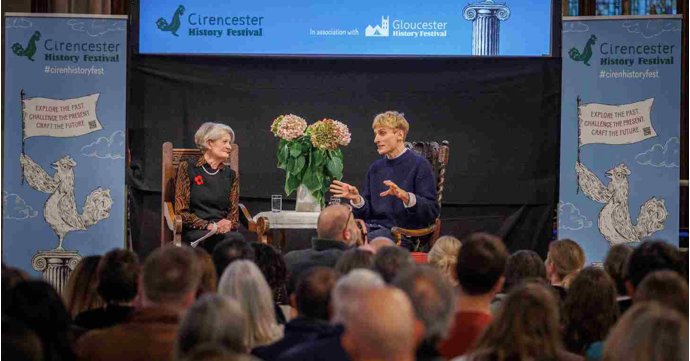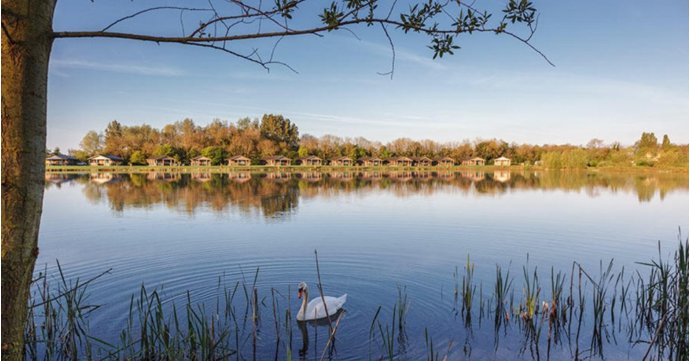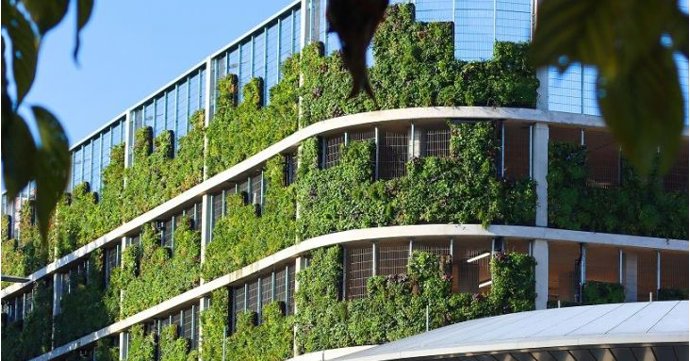With its famous Victorian docks, iconic Norman cathedral, picturesque Tudor houses and walls that dates back to Roman times, Gloucester boasts a fascinating history.
Whether you’re an aviation enthusiast, scholar, or simply a history buff, SoGlos digs deep into the archives to discover 15 fascinating facts about the city’s rich heritage.
The oldest library in Northern Europe
One of Gloucester’s most beautiful buildings, Blackfriars Priory, is one of the oldest surviving Dominican priories in the nation — and its Scriptorium is the oldest and most well-preserved purpose-built library in Northern Europe!
A fitting home, then, for the popular Gloucester History Festival which takes place every spring and autumn at the ancient priory.
A royal school
Boasting one of the most fascinating histories of any school in the county, The King’s School Gloucester dates back to 681 — before it was established by King Henry VIII in 1541 as a prestigious new Cathedral School.
The £2 million refurbishment of its Sixth Form Centre, which was unveiled in 2021, uncovered a 13th century archway which had been hidden within a wall for around 600 years — which now has pride of place in the Sixth Form Centre’s reception.
One of the only kings buried outside of London
One of Gloucester's most important historical sites for a myriad of reasons (some of which feature in this hot list!), Gloucester Cathedral is the final resting place for one of the only kings to be buried outside of London — King Edward II — who is believed to have met a rather grisly end at the nearby Berkeley Castle.
Gloucester Cathedral also hosted the coronation of King Henry III in 1216, who was just nine years old at the time he ascended to the throne.
Roman remains
Offering a slice of history in the heart of Gloucester, visitors to the Museum of Gloucester can peer down at the remains of a Roman wall which runs underneath the building, dating back to when Gloucester was a Roman fortress called Glevum.
Roman ruins can also be found in the Eastgate underground viewing chamber, which showcases remains including the base of a 13th century tower and a horse-pool.
World-famous cheese
Gloucester’s Indoor Market has historic and delicious roots which date back to 1498, when the market area was set up due to the vast amounts of cheese — including Double Gloucester — being produced.
The annual Gloucestershire Cheese Rolling is also a worldwide sensation, with thousands flocking to Coopers Hill near Brockworth to chase the cheese down an incredibly steep incline almost every year since the 1800s.
The first British and Allied jet
The first ever British and Allied jet, the Gloster E28, was designed and built by the Gloster Aircraft Company — and powered by Frank Whittle’s jet engine.
Many trial flights took off from Brockworth Airfield, with a replica of the aircraft at the Jet Age Museum, which is free to visit and run by volunteers, some of whom have even flown the aircraft on display!
The start of the Sunday School movement
Philanthropist Robert Raikes, the pioneer of Sunday schools, was born in Gloucester in 1736; baptised at St Mary de Crypt church; and educated at The Crypt School. He is credited with transforming the concept of Sunday School into a regional, national and international movement within his lifetime.
He was the editor of one of the world's oldest newspapers — the Gloucester Journal — which was started by his father (also called Robert Raikes); and is thought to be responsible for promoting the construction of one of the world's first purpose-built prisons in the 1790s. Much of the original Gloucester Prison still stands today and Robert Raikes' House is now a popular pub in the city centre, too.
LV14 SULA Lightship
One of Gloucester Docks' most iconic sights, the LV14 SULA Lightship is a nationally registered historic Lightvessel with an incredible past.
The vessel was stationed on the Humber Estuary, protecting mariners for 26 years before being decommissioned in 1985 and eventually making its way to Gloucester — and it's unique Fresnel lens was brought back to life in 2020 as part of its ongoing restoration, thanks to its new owners.
The Tailor of Gloucester
Said to be Beatrix Potter’s personal favourite, The Tailor of Gloucester was inspired by the true story of a local tailor. Beatrix visited his shop in Gloucester and spent time sketching images of the city, before penning the now beloved story.
The original building, which is home to The House of the Tailor of Gloucester museum, can be traced back to 1535 — and resides close to Gloucester Cathedral down one of the city's prettiest streets.
The largest window in the world
The Great East Window at Gloucester Cathedral boasted the accolade of being the largest window in the world when it was installed in the 1350s — and still remains a landmark of European medieval stained glass.
Reaching 22 metres high and 12 metres wide, the window is a big as a tennis court!
American National Anthem
Born in Gloucester in 1750, local composer and former King’s School student, John Stafford Smith, wrote the music for ‘The Anacreontic Song’ — which went on to become America’s National Anthem, known as ‘The Star-Spangled Banner’.
A memorial for John now resides in Gloucester Cathedral to mark his contribution to one of the world's most famous pieces of music.
The Domesday Book
Extraordinary historical tome, the Domesday Book was planned right here in the county, when William the Conqueror held the Christmas Court in Gloucester back in 1085.
He directed his men to visit shires across England to find out how the land was occupied, resulting in this incredible record of life in the country just after the Norman conquest.
Ivor Gurney’s birthplace
World-renowned poet and composer, Ivor Gurney, was born at Queen Street in Gloucester back in 1890, attending The King’s School and singing as a chorister at Gloucester Cathedral, before going on to write hundreds of poems and songs.
The revered musician is now commemorated at Gloucester Cathedral in Thomas Denny’s Ivor Gurney window, which is located in the Lady Chapel.
England's Glory
Match-making company, S. J. Moreland and Sons, was established on the outskirts of Gloucester in 1867 and went on to produce the iconic England’s Glory matches.
Although the brand went bust in the 70s, the tribute pub, under the same name, still resides on London Road and hosts a fantastic programme of live music from the hottest local talent.
Crimean War
Gloucester contractor, William Eassie, made a priceless contribution to troops in the Crimean War, providing shelter in the form of prefabricated wooden huts.
In 1854, a group of French soldiers visited the city to observe how the huts were manufactured, before more than 2,000 were dispatched to troops.




















.jpg?width=432&height=227&rmode=pad&bgcolor=ffffff&quality=85)
